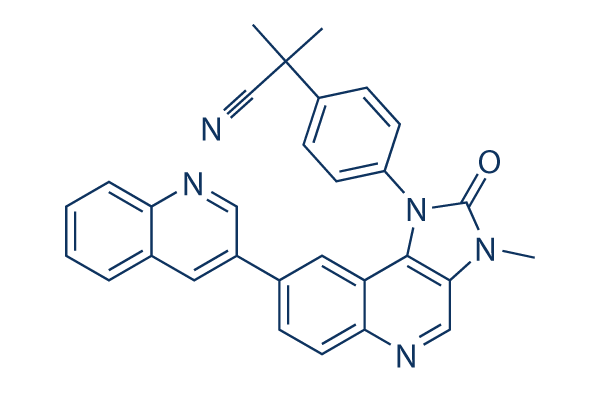The tissue microarray was con structed with single 0. 6 mm diameter cores of each and every case spaced 0. eight mm apart within a grid format applying a Tissue Microarrayer. The tissue microarray block was then reduce into 5 um sec tions having a microtome, adhered for the slide by an adhesive tape transfer technique and UV crosslinked. TMAs had been con structed employing RCC cores from 330 sufferers. Tumors have been represented by two cores from distinctive regions from the specimen. Specimens and clinical data had been collected with approval of a Yale University Institutional Review Board. Histological subtypes incorporated clear cell, papillary, chromophobe, mixed histol ogy, oncocytomas, and sarcomatoid tumors. Oncocytomas have been excluded from survival ana lyses given that they’ve low metastatic prospective and are curable by nephrectomy.
Eight percent had stage II and III disease, 56% had stage I and 28% had stage IV illness. 12% have been Fuhrman nuclear grade I, 52% grade II, 27% grade III and 9% grade IV. Specimens had been resected among 1987 and 1999, follow up time was 2 240 months. Age at diagnosis was 25 87 years. No individuals have been treated with suniti nib, sorafenib, pazopanib, bevacizumab, everolimus or selleck syk inhibitors temsirolimus, even though a handful of had been previously treated with interferon or interleukin two in the metastatic setting. Efficiency status, LDH, hemoglobin and calcium levels have been unavailable. Immunofluorescence One particular set of two slides was stained indi vidually for the three target markers, p85 and p110a PI3K subunits, and mTOR. Antibody validation was carried out by immunoblots to verify presence of a single band of your appropriate size.
AQUA stain ing was performed as described. Slides were incu bated with mouse monoclonal anti human PI3K p85, at 1,50, rabbit anti human PI3K p110a, clone C73F8 at 1,200 or rabbit monoclonal anti human mTOR, clone 7C10 at 1,40, explanation Goat anti mouse HRP decorated polymer backbone was utilized as a secondary reagent. To create a tumor mask, slides have been simultaneously incubated with rabbit or mouse anti cytokeratin at 1,100, and visualized with an appropriate secondary antibody conjugated to Alexa 488. The target antibody was visualized with Cy5 tyramide. To verify that there was no background staining from the Alexa 488, slides have been stained with and devoid of Cy5 tyramide. Automated Image Acquisition and Analysis Pictures  were acquired and analyzed using extensively described algorithms. Briefly, monochromatic, higher resolution pictures had been obtained of each histospot. Tumor was distinguished from stroma by cytokeratin streptavidin signal. Cell surface coales cence of cytokeratin was made use of to localize membranes and DAPI to recognize nuclei.
were acquired and analyzed using extensively described algorithms. Briefly, monochromatic, higher resolution pictures had been obtained of each histospot. Tumor was distinguished from stroma by cytokeratin streptavidin signal. Cell surface coales cence of cytokeratin was made use of to localize membranes and DAPI to recognize nuclei.
No related posts.
